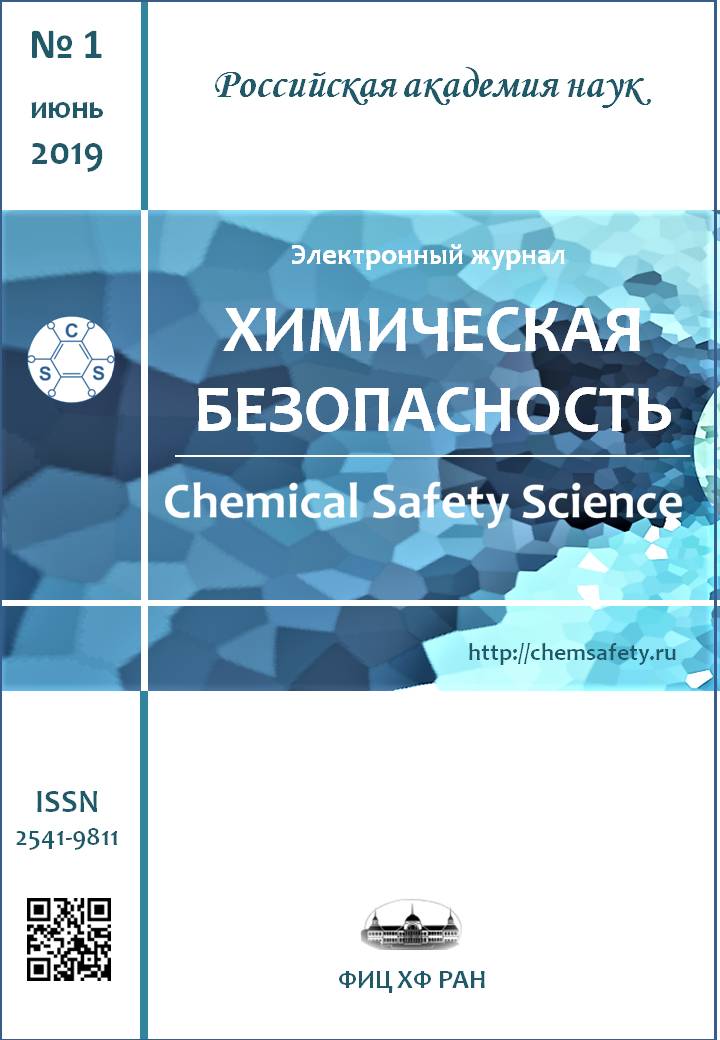CONTROL PROCEDURE FOR SYNTHETIC DYES CONTENT IN FOOD PRODUCTS
Abstract
An analytical procedure for simultaneous determination of 17 synthetic dyes (i.e. E 102, E 104, E 110, E 121, E 122, E 123, E 124, E 127, E 128, E 129, E 131, E 132, E 133, E 142, E 143, E 151, and E 155) in different kinds of food products, including dairy food and high-protein food products, has been developed and validated. The procedure is characterized by simplicity, reliability, high sensitivity and can be easily applied in accredited laboratories. The workflow runs starting from the extraction of dyes from food products with an aqueous-methanol solution of ammonia followed by centrifugation, decantation, adjusting the extract pH value to 7 and subsequent quantitative determination using high performance liquid chromatography with diode array detection. Hexane is used to purify extracts from lipids; milk proteins are precipitated using Karrez I, II reagents. Chromatographic separation of synthetic dyes is carried out on a C18 reverse phase column (Zorbax XDB, 150 x 4.6 mm, 5.0 µm) in gradient elution mode. The mobile phase is as follows: A – 1.5% solution of ammonium acetate, B – methanol: acetonitrile (80 : 20). The quantitative limit for the synthetic dyes varies in the range of 1–10 mg/kg. The maximum expanded uncertainty of the results does not exceed 23% for each synthetic dye.
References
Bolotov V.M., Nechaev A.P., Sarafanova L.A. // Food dyes: classification, properties, analysis, application. SPb.: GIORD, 2007. 240 p. [in Russian].
Codex STAN 192-1994 Codex general standard for food additives (GSFA). Rome: FAO/WHO Codex Alimentarius Commission, 1995. 475 р.
European Parliament and Council Directive 94/36/EC of 30 June 1994 on Colors for Use in Foodstuffs // Official Journal of the European Communities, 1994. L. 237. P. 13.
Commission Regulation (EC) No. 884/2007 on Emergency Measures Suspending the Use of E 128 Red 2G as Food Colour // Official Journal of the European Union, 2007. L. 195. P. 8.
SanPiN. Requirements for food raw materials and food products. Hygienic standard. Indicators of safety and security for human food raw materials and food products. Approved by Ministry of Public Health of the Republic of Belarus, June 21, 2013 [in Russian].
TR CU 029/2012 Safety requirements for food additives, flavouring agents and processing aids. Eur. Econ. Comiss. Minsk: Gosstandart: BelGISS, 2014. 272 p. [in Russian].
Electronic Code of Federal Regulations e-CFR. https://ecfr.io/Title-21/cfr74_main (accessed 01.03.2019).
GOST [State Standard] 33406-2015. Production of alcoholic drinks, soft drinks and juice, flavoring additives. Determination of content of synthetic dyes by high-performance liquid chromatography. Minsk: Gosstandart, 2016. 16 p. [in Russian].
GOST [State Standard] 31504-2012. Milk and milk products. Determination of preservation agents and dyes by HPLC. Minsk: Gosstandart, 2015. 16 p. [in Russian].
MVI MN 2399-2005. Method of determining synthetic dyes in alcoholic and non-alcoholic drinks with high-performance liquid chromatography. Certificate of Attestation No. 380/2005 of 07.12.2005. Minsk: Repub. Scientific Practical Center of Hygiene, 2005. 15 p. [in Russian].
Instructions for use Reg. No. 108-1006, approved 05.01.2007. Method of determination of synthetic dyes in confectionery and bakery products, dairy products, juices, biologically active and food additives with HPLC. Minsk: Repub. Scientific Practical Center of Hygiene, 2005. 11 p. [in Russian].
de Araujo Siqueira Bento W., Lima B.P., Paim A.P.S. // Food Chemistry. 2015. V.183. P. 154. DOI: 10.1016/j.foodchem.2015.03.050.
Hong M.N., Suh H.J., Lee O.H., Chun H.S., Lee C. // Journal of International Scientific Publications: Agriculture and Food. 2014. V. 2. P. 68.
Kiseleva M.G., Pimenova V. V., Eller K. I. // Journal of Analytical Chemistry. 2003. V. 58. No. 7. P. 685. DOI: 10.1023/A:1024716322120
Vlase L., Muntean D., Cobzac S.C., Filip L. // Rev. Roum. Chim. 2014. V. 59. No. 9. P. 719.
Minioti K.S., Sakellariou C.F., Thomaidis N.S. // Anal. Chim. Acta. 2007. V. 583. No. 1. P. 103. DOI: 10.1016/j.aca.2006.10.002.
Mazdeh F.Z., Khorrami A.R., Moradi-Khatoonabadi Z. et al. // Trop. J. Pharm. Res. 2016. V. 15. No. 1. P. 173. DOI: http://dx.doi.org/10.4314/tjpr.v15i1.24.
Lehotay J., Pagáčiková D. // Journal of Liquid Chromatography and Related Technologies. 2015. V. 38. No. 5. P. 579. DOI: 10.1080/10826076.2014.922473.
Kirschbaum J., Krause C., Bruckner H. // Eur. Food Res. Technol. 2006. V. 222. No. 5. P. 572.
Kucharska M., Grabka J. // Talanta. 2010. V. 80. P. 1045. DOI: https://doi.org/10.1016/j.talanta.2009.09.032.
Copyright (c) 2019 A. I. Palianskikh, L. L. Belyshava, T. A. Fiodarava, E. V. Filatchankava, and Y. M. Pliashak

This work is licensed under a Creative Commons Attribution-NonCommercial 4.0 International License.












